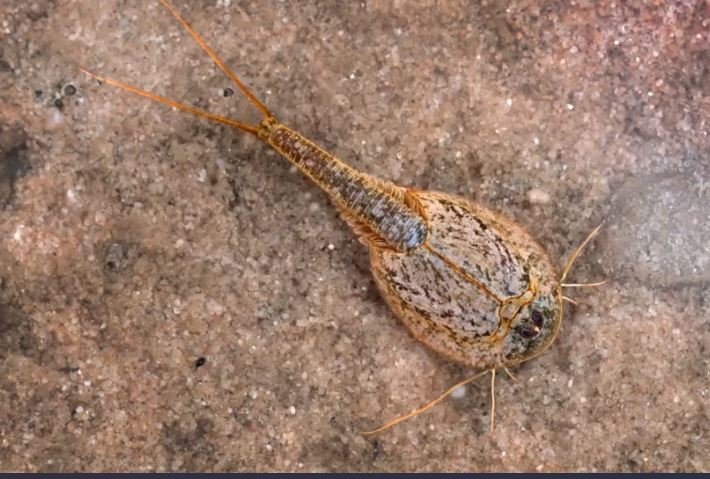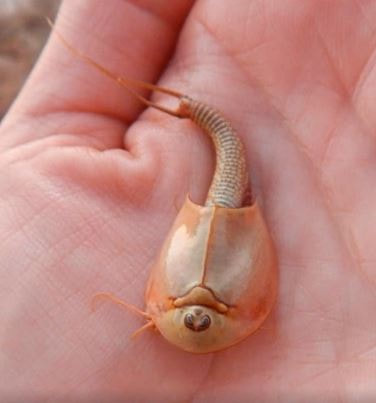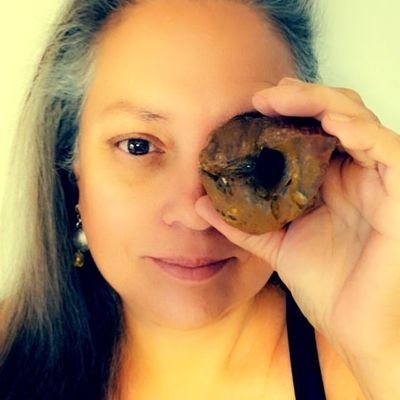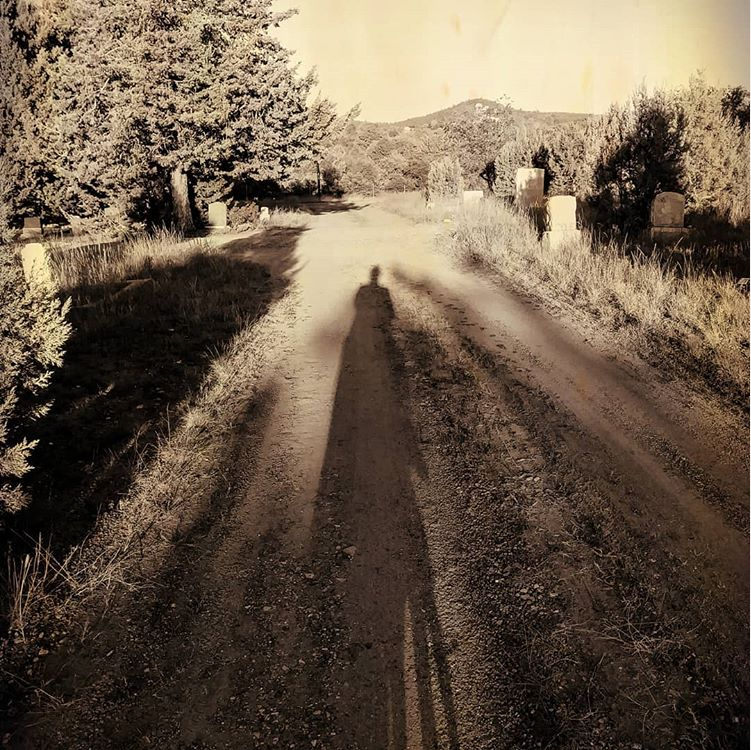|
Arizona's desert is home to some of the oldest living animals on Earth: dinosaur shrimp, or triops, meaning three eyes. Triops are crustaceans belonging to the order Notostraca, which dates back over 300 million years ago. They have survived mass extinctions, ice ages, and continental drifts. I first encountered these little creatures a couple of years ago during the monsoon season. We had gotten unusually plentiful rainfall that year, and one day, after a hard rain, I took a walk on our land, which is in the high deserts of Arizona. I was just looking around as one does when one lives out in the middle of nowhere in Arizona after a rain. I found the ordinarily bone-dry wash was suddenly full of chocolate water. I was looking specifically for tadpoles because the desert toads will emerge during the summer rains and breed. I did find some tadpoles, but I also spied something else swimming in the muddy water: dinosaur shrimp. Being the nature lover I am, these creatures that I had never seen before excited me. They were orange in color and looked like tiny horseshoe crabs. I knew nothing about them, so I did some research. I thought I would share some of what I learned. Triops have three eyes: one on top of their head and two on the sides. They have a segmented body with a carapace that covers their head and thorax. They have a long tail with two forked appendages called furcae. They can grow up to 10 cm long and come in various colors, such as green, brown, red, or blue. The ones I saw were reddish orange. They live in ephemeral pools of water that form after rainstorms or snowmelt, or in our case, the chocolate waters that flow from powerful monsoons. The waters that birth these tiny dinosaur shrimps can range from a few centimeters to several meters deep and last from a few days to several months. The shrimp have a remarkable adaptation to survive in these temporary habitats: they can produce eggs that can withstand desiccation, freezing, and high temperatures for decades until they encounter water again. When the eggs hatch, the shrimp go through several molts and reach maturity in about two weeks. They can reproduce both sexually and asexually, depending on the environmental conditions. The lifespan of dinosaur shrimp is up to 90 days. Their actual life cycle depends on the water quality they are in and the availability and quality of food they have access to. Dinosaur shrimps are omnivorous and eat zooplankton, insect larvae, algae, and bacteria. They also scavenge on dead organic matter and will even cannibalize their own kind. They will, in fact, eat almost any organic material they can fit into their tiny mouths. Dinosaur shrimp are considered living fossils because they have changed very little over time. They are essential to the desert ecosystem because they help recycle nutrients and organic matter in the water. They also provide food for birds, reptiles, and amphibians. Some Native American tribes consider triops sacred and use them for ceremonial purposes. For example, it is believed that dinosaur shrimp are a symbol of life and renewal and have a connection to their ancient ancestors. Dinosaur shrimp may have been a source of food and medicine. For example, the Navajo boil dinosaur shrimp and drink the broth to treat stomach ailments. The Hopi use dinosaur shrimp in rituals to bless their crops and livestock. Dinosaur shrimps are not endangered in Arizona but are threatened by habitat loss, pollution, and climate change. Their eggs can survive for years in dry desert conditions but need water to hatch and grow. If the pools dry up too quickly or become contaminated, the dinosaur shrimp population will decline. Climate change may also affect rainfall patterns and the temperature of their habitat, making it harder for them to survive. Dinosaur shrimps are not harmful to humans. And believe it or not, they have been sold as pets for years! You can buy triops kits on Amazon to raise your own. The kits have everything you need to grow, house, and nurture your very own prehistoric shrimp ancestor. And if you ever visit Arizona at just the right time, you might be lucky enough to spot some of these ancient wonders of nature in the wild. *Watch the video Hundreds of Dinosaur Shrimp Emerge After Arizona Monsoon that discuss dinosaur shrimp (Triops longicaudatus) that have been found in the ball court pond at Wupatki National Monument in Arizona.
0 Comments
|
Denise AlvaradoAuthor and Voodoo Muser, setting lights, working mojo, throwing wanga, and working wonders in liminal spaces and dusty crossroads. Archives
June 2023
Categories
All
|
Follow Us on Twitter
© The Voodoo Muse, All rights reserved worldwide.
Web design by Voodoolicious Designs.
Proudly powered by Papa Legba.
Web design by Voodoolicious Designs.
Proudly powered by Papa Legba.







